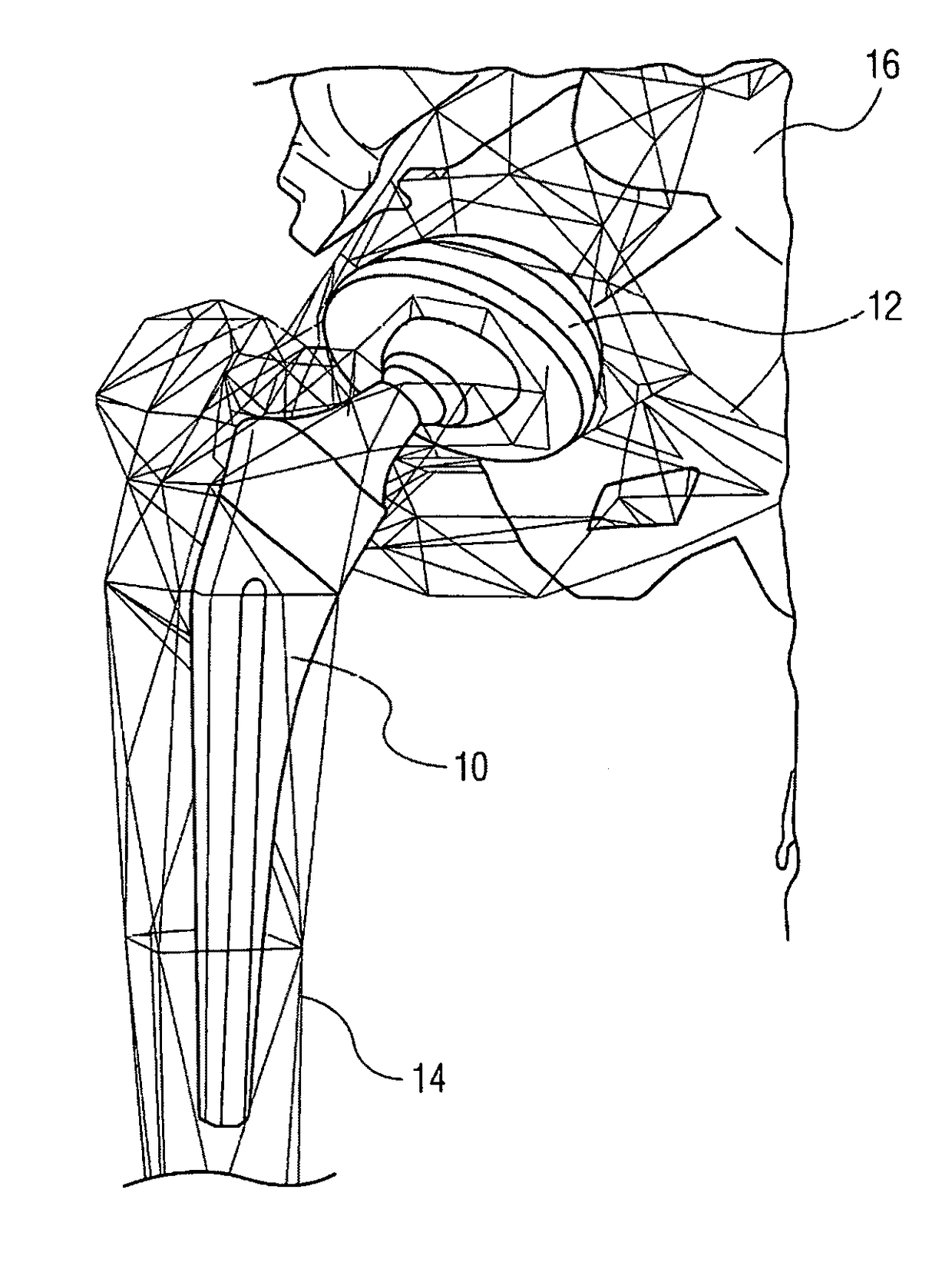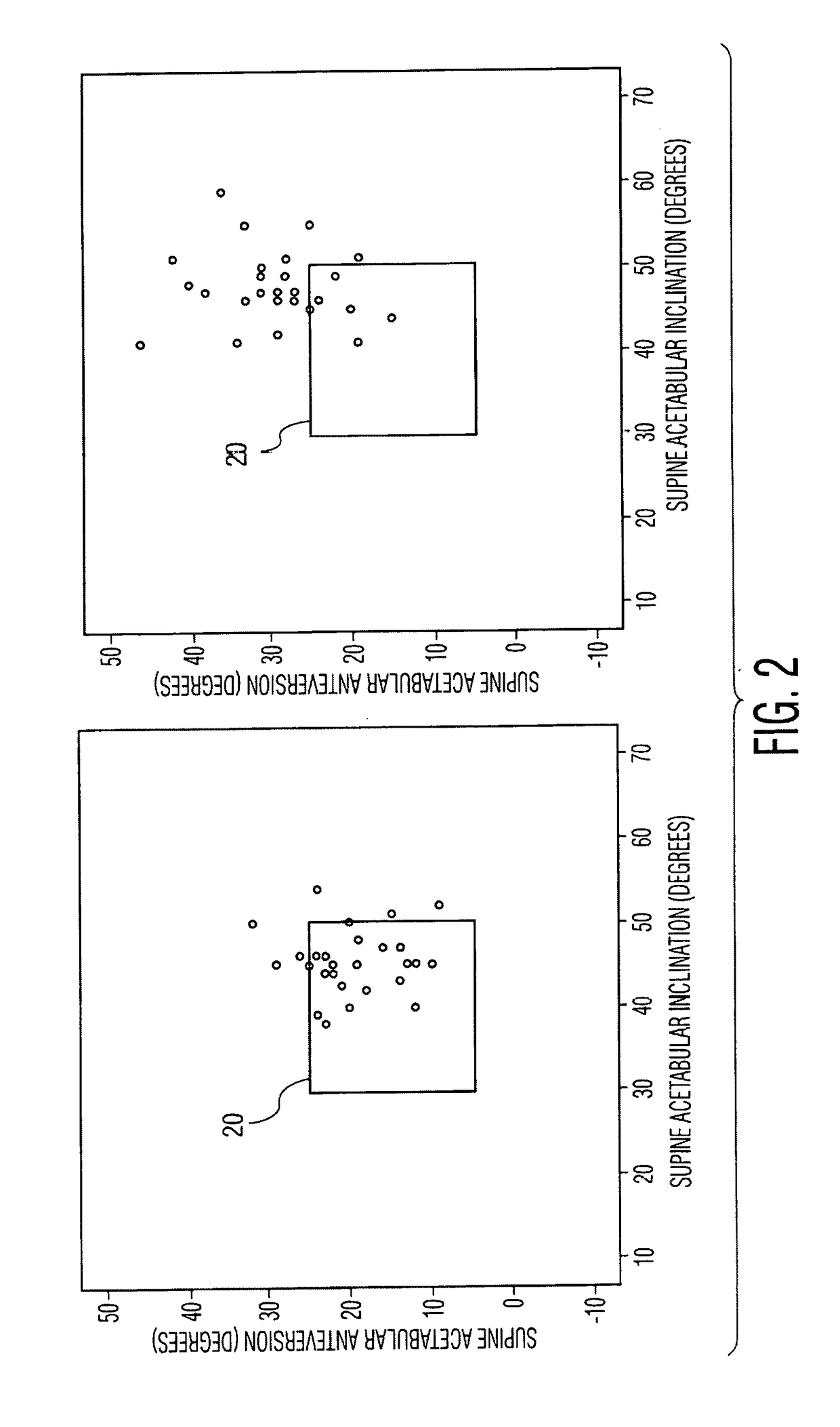Patient specific implantation method for range of motion hip impingement
a patient-specific, hip-implanting technology, applied in the field of patient-specific hip-implanting implantation methods, can solve the problems of excessive wear and failure of components, permanent dislocation of the head, and excessive liner wear
- Summary
- Abstract
- Description
- Claims
- Application Information
AI Technical Summary
Benefits of technology
Problems solved by technology
Method used
Image
Examples
Embodiment Construction
[0047]FIG. 1 is a plot of pelvic flexion angles in the supine position versus those in the standing position. Patients were divided into three groups. There was (a) greater than 10° flexion of the pelvis from the supine to the standing position in two of the 101 patients, (b) 10° or less pelvic flexion angle in 91 of the 101 patients (shown for example as 3° standing and 18° supine), and (c) greater than 10° extension of the pelvis in eight of the 101 patients.
[0048]In current orthopaedic surgery, it is assumed that Pelvic Tilt changes from standing to supine are negligible. That when a patient lays down supine on an operating room (OR) table or to have an anterior-posterior (AP) x-ray taken, or to have a CT taken, that any change in the pelvis flexing forward or backward is negligible.
[0049]In reviewing published data on pelvic tilt, these papers show a “general” correlation between standing and supine pelvic flexion (tilt). A point on a 45° angle would show that the pelvic tilt of...
PUM
 Login to View More
Login to View More Abstract
Description
Claims
Application Information
 Login to View More
Login to View More - R&D
- Intellectual Property
- Life Sciences
- Materials
- Tech Scout
- Unparalleled Data Quality
- Higher Quality Content
- 60% Fewer Hallucinations
Browse by: Latest US Patents, China's latest patents, Technical Efficacy Thesaurus, Application Domain, Technology Topic, Popular Technical Reports.
© 2025 PatSnap. All rights reserved.Legal|Privacy policy|Modern Slavery Act Transparency Statement|Sitemap|About US| Contact US: help@patsnap.com



